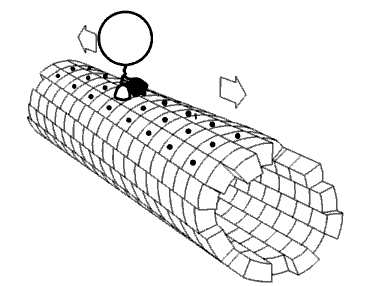
Photo from academic.microsoft.com
The glypican family of cell-surface proteoglycans, anchored to the outer leaflet of eukaryotic cell membrane through a glycosylphosphatidylinosital (GPI) anchor, is involved in important cellular signaling pathways. Glypican-1 (Gpc1), the… Click to show full abstract
The glypican family of cell-surface proteoglycans, anchored to the outer leaflet of eukaryotic cell membrane through a glycosylphosphatidylinosital (GPI) anchor, is involved in important cellular signaling pathways. Glypican-1 (Gpc1), the predominant heparan sulfate (HS) proteoglycan in the developing and adult human brain, has two N-linked glycans and three chains of HS. Loss-of-function mutations show that both glypican core protein and their HS chains are important in shaping animal development. Here, to explore structure, dynamics, and interactions of Gpc1 in a membrane environment, we have performed molecular dynamics simulation studies of Gpc1 modeled with both N-glycans and HS chains and anchored to a bilayer via a GPI linker. Our analyses reveal that HS chains exhibit a pronounced flexibility, allowing great freedom for HS to reach out and accommodate binding to receptors and other signaling molecules. In addition, within the given simulation time, Gpc1 core protein is steadily located ∼50 A above the membrane surface, showing a tendency of providing enough distance for HS assembly enzymes or a membrane receptor to interact with the membrane-proximal region of Gpc1.
Journal Title: Biophysical Journal
Year Published: 2017
Link to full text (if available)
Share on Social Media: Sign Up to like & get
recommendations!